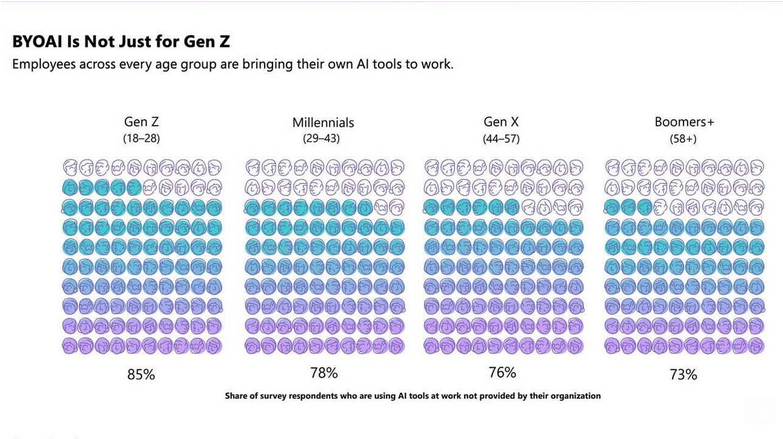AI at Work: From Experimentation to Business Transformation
In the realm of workplace technology, 2024 has been marked as the year where Artificial Intelligence (AI) transitions from theory to practice. Recent data reveals a significant surge in the utilization of generative AI, nearly doubling over the past six months, with a staggering 75% of global knowledge workers now incorporating AI into their daily tasks. Moreover, employees are taking the initiative to integrate AI tools into their workflow, driven by the need to cope with the relentless pace and volume of work. While the acknowledgment of AI’s importance is widespread among organizational leaders, many are grappling with the challenge of devising a concrete plan to harness its potential effectively. This hesitancy, exacerbated by the pressure to demonstrate immediate returns on investment, threatens to impede progress despite the inevitable integration of AI into the workplace.
The current juncture marks the transition from the experimental phase of AI implementation to comprehensive business transformation, akin to previous technological disruptions such as the advent of the internet or personal computing. Successful organizations will be those that leverage AI to stimulate growth, optimize costs, and enhance customer value, thereby gaining a competitive edge in the market.
Simultaneously, the evolving landscape of the labor market is witnessing the profound impact of AI. While concerns regarding job displacement persist, leaders are confronted with a different challenge – a scarcity of talent for critical roles. As employees contemplate career transitions, the significance of AI proficiency is poised to rival conventional experience criteria. The advent of AI heralds not only a raise in the bar for employees but also the potential to shatter the glass ceiling, facilitating career advancement and transformation.
To address the inertia surrounding AI adoption, Microsoft and LinkedIn have conducted an extensive study, encompassing insights from 31,000 individuals across 31 countries. By analyzing LinkedIn hiring trends and Microsoft 365 productivity signals, along with feedback from Fortune 500 clients, the research sheds light on the profound implications of AI on the workforce and offers actionable strategies for leaders navigating this transformative landscape.
One of the most striking findings underscores the ubiquitous integration of AI into workplace dynamics, with a remarkable 75% of knowledge workers actively utilizing AI tools. The benefits are palpable, with users citing time-saving, enhanced focus, increased creativity, and overall job satisfaction as notable outcomes. Despite this widespread adoption, organizational leaders are grappling with the challenge of quantifying the productivity gains associated with AI implementation, leading to a lack of cohesive vision and strategy.
Moreover, the phenomenon of ‘Bring Your Own AI’ (BYOAI) is gaining traction, with a significant majority of AI users opting to leverage personal AI tools within the workplace. This grassroots approach, while indicative of employees’ initiative, poses challenges in terms of data security and standardization. Additionally, the relentless pace of work, exacerbated by email overload and persistent meetings, underscores the urgent need for AI intervention to streamline workflows and foster innovation.

Looking ahead, the emergence of AI power users offers a glimpse into the future of work. These individuals, characterized by their extensive utilization of AI tools, are redefining traditional work patterns and reaping the benefits of enhanced productivity and creativity. However, their journey towards proficiency necessitates organizational support in the form of leadership endorsement, tailored training programs, and a culture conducive to innovation.
The era of AI at work heralds a paradigm shift in how tasks are accomplished and careers are forged. As organizations navigate this transformative landscape, the imperative lies in transcending experimentation and embracing AI as a catalyst for tangible business outcomes. By prioritizing strategic AI adoption, fostering a culture of innovation, and investing in employee upskilling, organizations can unlock the full potential of AI and chart a course towards sustained growth and competitiveness in the digital age.